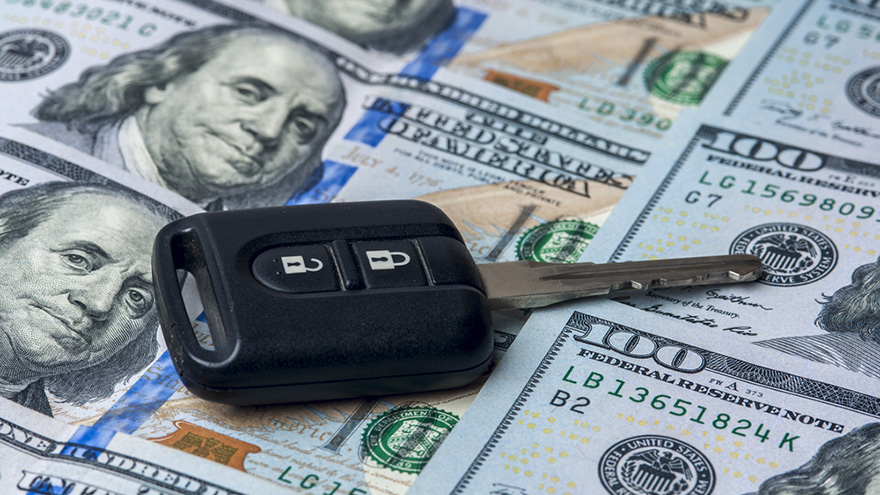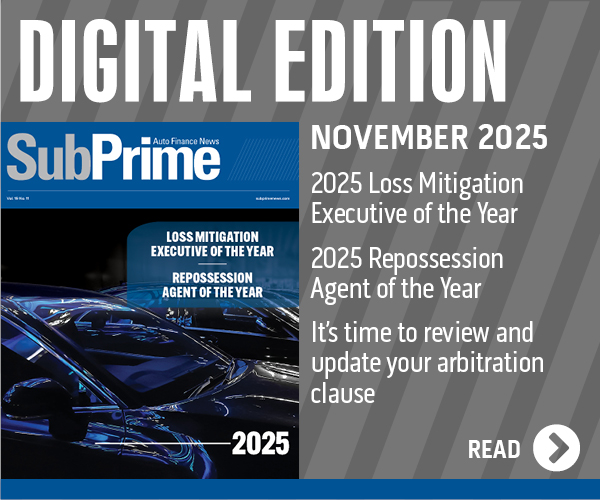KBRA sees seasonal trends appear in September ABS indices

By subscribing, you agree to receive communications from Auto Remarketing and our partners in accordance with our Privacy Policy. We may share your information with select partners and sponsors who may contact you about their products and services. You may unsubscribe at any time.
NEW YORK –
September’s auto loan asset backed security data didn’t surprise analysts at Kroll Bond Rating Agency (KBRA). The latest readings for KBRA’s prime and non-prime indices arrived with seasonal patterns evident.
Analysts found that auto loan ABS credit performance weakened slightly in September, with net losses and delinquencies rising month-over-month in both prime and non-prime.
“The month-over-month increase was to be expected as seasonal factors will likely continue to push losses higher for the remainder of the year,” analysts said in the latest report. “On a year-over year-basis, both indices saw improvements.
Net losses and delinquencies each rose in September within KBRA’s Prime Auto Loan Index. Annualized net losses increased 7 basis points month-over-month to 0.66%, while the percentage of borrowers 60-days past due increased 2 basis points to 0.43%.
However, both performance metrics improved on a year-over-year basis, each falling 4 basis points compared to September of last year.
KBRA pointed out September marked the 20th consecutive reporting period in which net losses and delinquency rates have fallen year-over-year within the index.
Subscribe to Auto Remarketing to stay informed and stay ahead.
By subscribing, you agree to receive communications from Auto Remarketing and our partners in accordance with our Privacy Policy. We may share your information with select partners and sponsors who may contact you about their products and services. You may unsubscribe at any time.
Meanwhile, collateral performance in KBRA’s Non-Prime Auto Loan Index demonstrated some signs of improvement.
Although annualized net losses climbed 59 basis points month-over-month to 8.87%, analysts determined that losses dropped 39 basis points versus a year ago.
KBRA indicated the percentage of borrowers that were 60-days delinquent remained steady month-over-month at 5.14%, but ticked up 16 basis points compared to last September.
“The vast majority of issuers included in the index saw their performance deteriorate versus the previous month, which is likely being driven by seasonal factors, as borrowers spent on summer travel and begin to gear up for the holiday season,” analysts said.
KBRA closed its latest update by sharing an analysis of loan level data, which revealed mixed results in September.
The percentage of prime and non-prime borrowers who went from 60 days or more delinquent to current was fairly steady month-over-month, coming in at 21.2% and 15%, respectively, versus 21.5% and 14.7% during the previous month.
However, the percentage of prime and non-prime borrowers who were 60 days or more delinquent to start the month — and were subsequently charged-off by the end of the month — jumped to 15.9% and 24.3%, respectively. The readings represented a month-over-month increase of 67 basis points in the prime space and 112 basis points in the non-prime segment.


